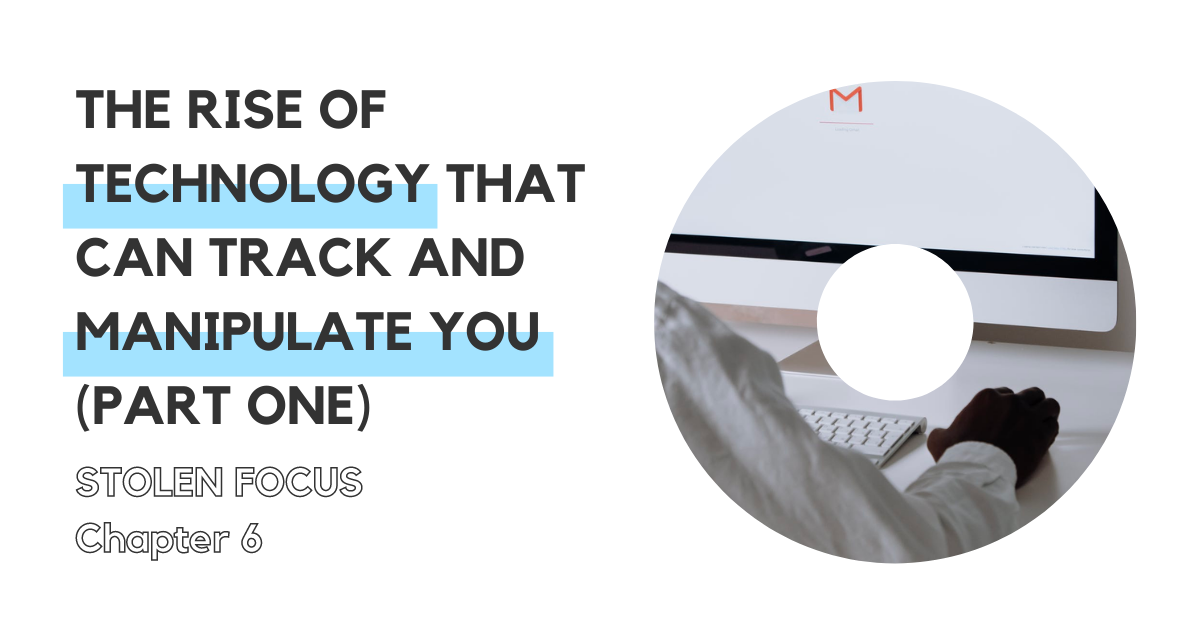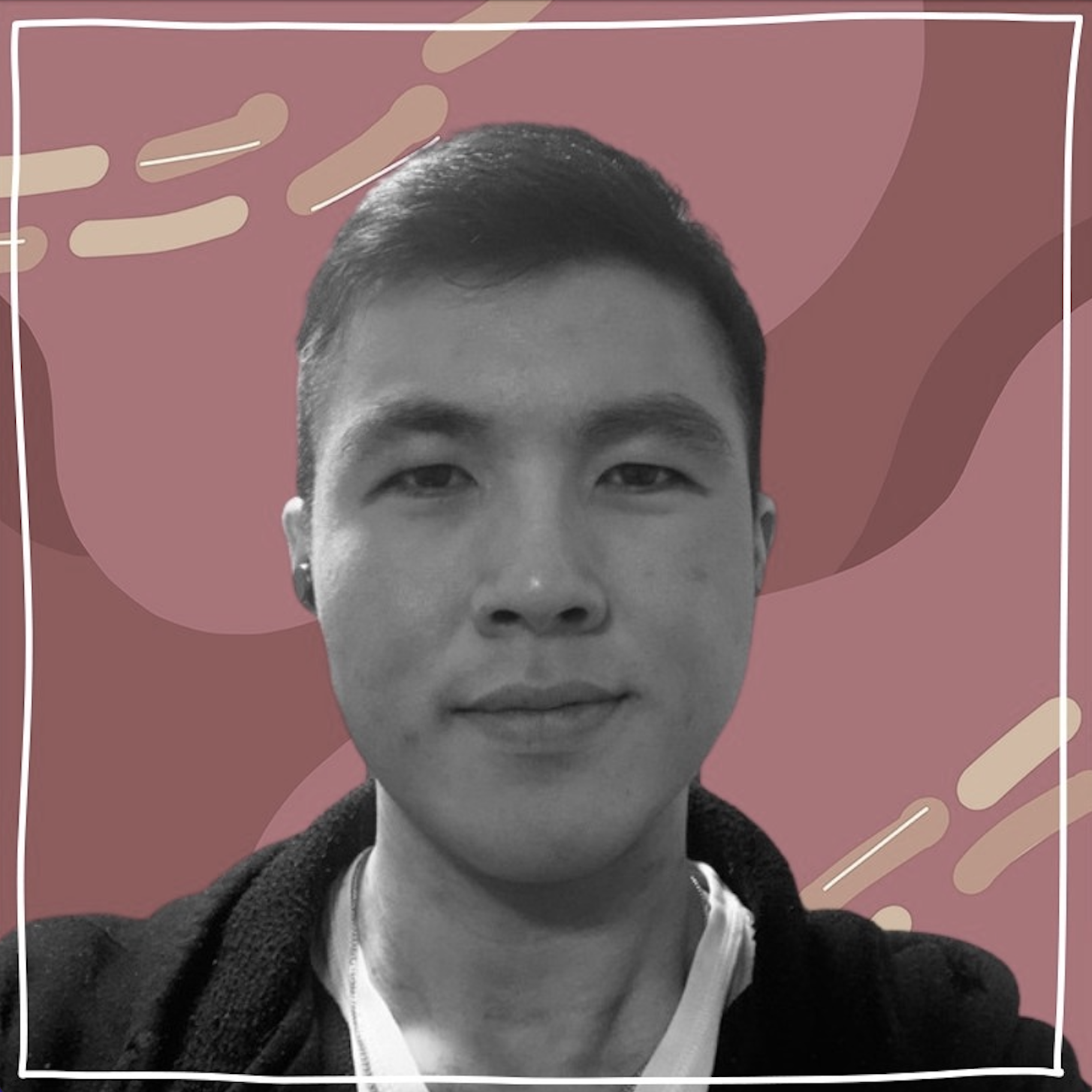“It’s not your fault you can’t focus. It’s by design.” – Stolen Focus, Chapter 6
Posted on: June 8, 2022
Post Category: Book Notes

About #onepageonepoint
#onepageonepoint aims to summarise new ideas from books on personal and professional development – with (approximately) one point for each page. Read more about this project here.
Today for #onepageonepoint, we have summary notes for Stolen Focus – for chapter 6: ‘Cause 6: The Rise of Technology That Can Track and Manipulate You (Part One)’.
If you are interested in getting yourself a copy or learn more about the book, click here.
Chapter 6: ‘Cause Six: The Rise of Technology That Can Track and Manipulate You (Part One)’
- A digital detox is temporary and does not fix the systematic forces that affect our attention; our attention is altered by huge invasive forces, hence an environmental change will make the difference.
- There are six ways that technology is harming our ability to pay attention – and all of these ways have one underlying force that needs to be overcome.
- Tristan Harris is a former Google engineer who appeared on the Netflix documentary The Social Dilemma, and Hari relates the topic of technological distractions to Harris’s prior experience studying and performing magic; magic is a play on humans’ inherent weaknesses and can manipulate people even when they think they are acting out of free will.
- Tristan took a course at Stanford in 2002 that was, in essence, about manipulating people using technology. It was taught by B.J. Fogg and was predominantly based on the philosophy of B.F. Skinner, who (from Chapter 2) found a way to get animals to do whatever he wanted by offering the right reinforcements.
- One of the app projects that emerged from this course was an app called Send the Sunshine. The app was then reinforced with added functionality of hearts and likes, and it was launched again, with the name it is known with today, Instagram.
- After Tristan noticed he became obsessed with his email and felt this attention span beginning to atrophy, he wondered if he himself was getting hacked by tech designers and whether this knowledge and technology was used ethically in the real world.
- ‘When a politician or a company wants to persuade you, they could pay a social media company to perfectly target their message just for you… years later, it was revealed that the campaign for Donald Trump had paid a company named Cambridge Analytica to do exactly that’ (Hari 2022, p. 107).
- Tristan believed in the use of technology to do good, however ‘At Google, he quickly learned, success was measured, in the main, by what was called “engagement”… more engagement was good… the more advertising they see… the more money Google gets’ (Hari 2022, p. 108).
- ‘Day after day, [Tristan] would watch as engineers proposed more interruptions of people’s live – more vibrations, more alerts, more tricks – and they would be congratulated’ (Hari 2022, p. 109).
- ‘Tristan was starting to realise: it’s not your fault you can’t focus. It’s by design. Your distractions is their fuel’ (Hari 2022, p. 109).
- In Tristan’s appeal presentation after deciding to leave Google, he says: ‘The people sitting around you in the Googleplex… control more than 50 percent of all the notifications on all the phones in the whole world. We are creating an arms race that causes companies to find more reasons to steal people’s time [and it] destroys our common silence and ability to think’ (Hari 2022, p. 111).
- The bottom line of tech companies like Google is to get people more distracted and spend time on the platform, and because of this bottom line, there is little incentive for these companies to change their approach.
- While Tristan was given an offer to stay back at Google, as a ‘design ethicist’, he researched how Snapchat hooked teenagers; Snapchat featured ‘Snapchat streaks’ between friends, and he thought ‘it was a perfect way to take the desire of teens for social connection and manipulate it to get them hooked’ (Hari 2022, p. 113).
- Aza Raskin invented the infinite scroll with the intention to make information easier to access, but realised more people were pulled into their devices, leading to people spending 50% more time on the platform – ‘time which could have been used for solving climate change, for spending time with their family, for strengthening social bonds’ (Hari 2022, p. 116).
- Many Silicon Valley insiders, like Tony Fadell and Sean Parker, have concerns about what these tech giants have created – and many predicted that It would only get worse.
- James Williams (former strategist at Google) addressed an audience of hundreds of leading tech designers with a simple questions ‘how many of you want to live in the world you are designing?’ and nobody put up their hand.
If you are interested in getting yourself a copy or learn more about the book, click here.
Interested in reading more? See my notes for Chapter 7.

About the author
Jason Khu is the creator of Data & Development Deep Dives and currently a Data Analyst at Quantium.